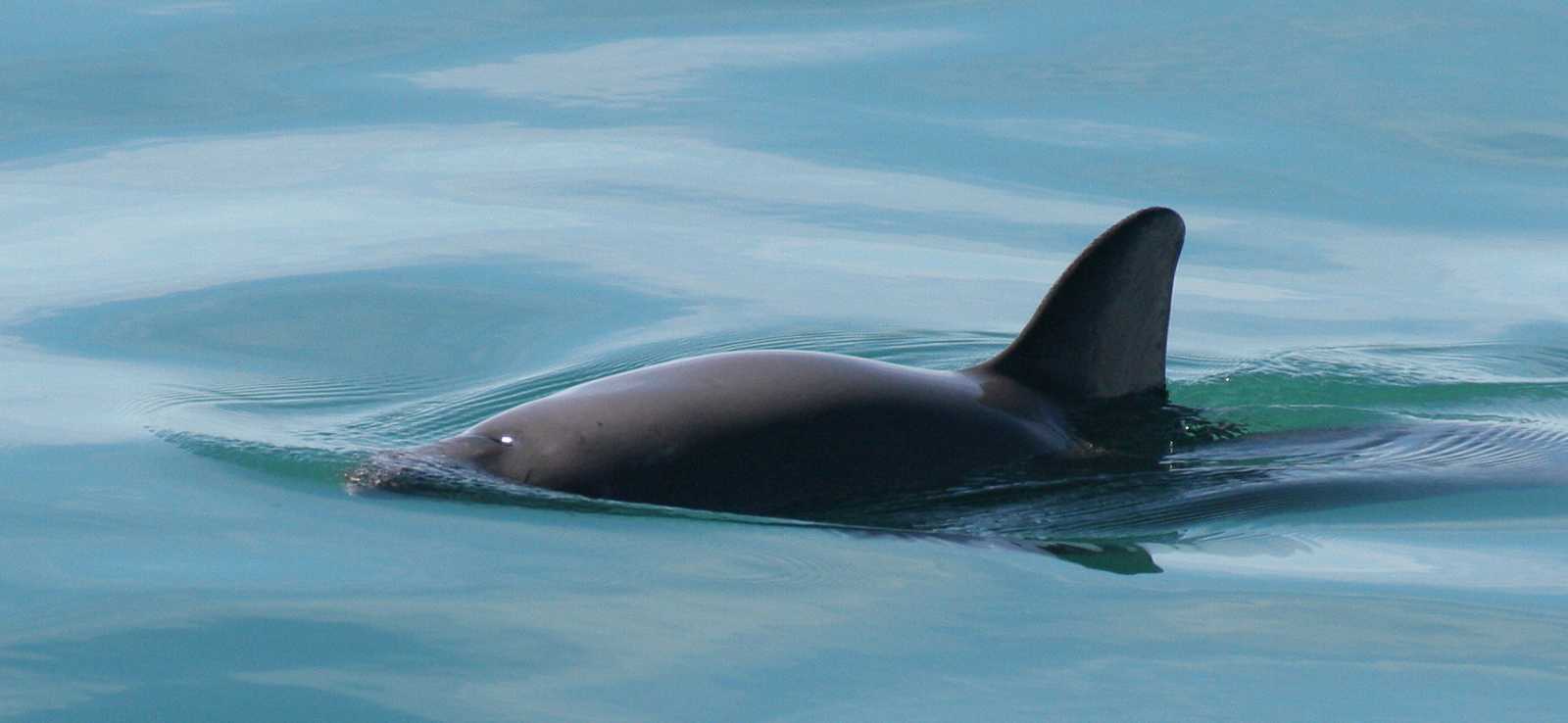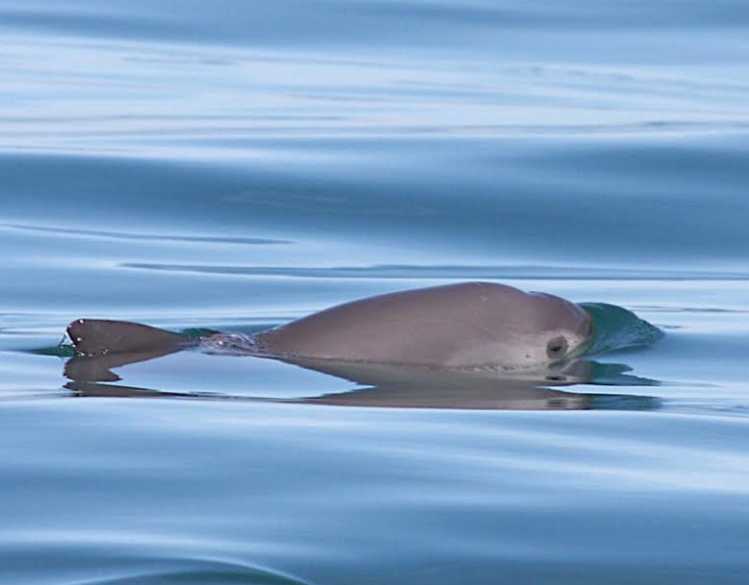
Vaquita
Phocoena sinus
Learn More About Vaquita
As the most endangered marine mammal in the world, vaquitas are dangerously close to extinction. The vaquita is the smallest of the cetaceans, measuring to about 5 feet long on average, but their size does not compromise their strength.
Vaquitas have no beak and are mostly dark gray with lighter gray undersides and black patches on their face. Their dorsal fins are unique in that they are taller and wider than most other porpoises.

The greatest threats to marine mammals are caused by people, but we can also be their greatest champions.
Sign up for email from The Marine Mammal Center to stay updated on how you can be an advocate and champion for marine mammals like vaquitas.
Habitat & Population Status
Vaquitas are only found in the shallow waters of the northern Gulf of California, Mexico. This area is abundant in fish and shrimp, and many people depend on fishing for their livelihood. Most fishers in the area, whether they are legally catching fish and shrimp or illegally fishing for totoaba, use a type of net called a gillnet. Gillnets are the primary reason for the vaquita’s decline.
It’s estimated that there are fewer than 30 individuals left in the vaquita population. This represents a decrease of more than 95 percent since 1997.
The Mexican government has taken a number of steps to protect this species, like establishing a Vaquita Refuge in the northern Gulf of California to protect the species’ core range as well as initiating a plan of monetary compensation for fisherman who rely on this area to make a living.
An emergency ban on gillnets was in place from 2015 to 2017 in the vaquita’s range, and a permanent ban on all gillnets (except for fishing for two specific species) was put in place in mid-2017. Despite these efforts, the vaquita population is not showing signs of recovery.
The illegal fishing of totoaba directly impacts the vaquita’s decline because the two animals are similar in size -- the gillnets used to catch totoaba are the ones vaquita are most prone to getting caught in. Gillnets are also the primary method used to catch fish and shrimp. During the shrimping season, over 400 miles of gillnets are set within the vaquita’s range every day.
With so few vaquitas remaining, conservation efforts are now focused on enforcement and development of fishing gear to replace gillnets, with enhanced efforts during the totoaba spawning season. The survival of the vaquita is heavily dependent on implementing significant changes in the gear used by fisheries within the Gulf of California.
Vaquita Research at The Marine Mammal Center
{"image":"\/Animals\/Wild\/Other species\/Vaquita-Olson-NOAA.jpg","alt":"vaquita","title":"Protecting Critically Endangered Vaquita from Entanglement Through Field Capture","link_url":"https:\/\/www.marinemammalcenter.org\/publications\/protecting-critically-endangered-vaquita-from-entanglement-through-field-capture","label":"Research Paper","type":"publication"}

Protecting Critically Endangered Vaquita from Entanglement Through Field Capture
Read MoreBreeding & Behavior
Female vaquitas reach sexual maturity between 3 to 6 years old, and after that it’s estimated that they give birth every other year between February and April. After a pregnancy of 10 to 11 months, vaquitas give birth to a calf that is typically 2.5 feet long and 16 pounds.
Vaquitas are solitary animals, but they can also be found in pairs or other small groupings. This behavior, in addition to their small size, makes it difficult to observe them. Vaquitas feed on small fish, shrimp, squid and octopus.















